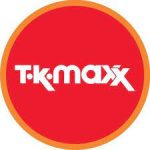
How expanding your network could be the key to your next successful project
Having recently started working with Igale and moving into a bit of a hybrid role, I’m doing some account management, a bit of sales, and
TKMaxx
Country or Region
UK & Europe
Industry
Retail

Leading High Street retailer with over 400 stores in the UK and Europe. Complex and onerous IT project management practices and governance in place. Technically very complex IT landscape with wide-ranging technologies and approaches including a complex European SOA architecture, geographically dispersed technical architects and information engineers, and a large number of complex IT and Business led programmes underway.
Using an Agile approach was completely new to this organisation and the roll-out and set-up for their first Agile project needed to be done quickly; successful buy-in was paramount both from the individuals within the European team and a plethora of senior people within the parent organisation.
Time was of the essence – the client needed the solution ahead of the next season’s planning window – a 6-month delivery period had been demanded. All the client’s team members required training and mentoring throughout the project, not only on using Agile but also the Microsoft tech stack chosen for the project.


Igale were selected to develop the new application and quickly assembled a team of people to develop the solution; people who had all worked together on previous Agile developments. Technical Architects, Senior Developers and a Scrum Master were to work with the Client’s new Product Owner to develop the solution. The project started with Igale’s Sprint 0 – a sprint which establishes a stable footing for the entire project from technical landscape, training and commercials, through to the vision, scope and the definition of done. Sprint planning, demos and retrospectives all followed the normal pattern; but, as per Igale’s proven Agile approach, a much higher emphases was placed on user story pre-conditioning, resulting in more successful and complete planning sessions and a 100% solid start to each of the 2-week sprints with every developer and tester knowing precisely what they had to work on.
Access to a second set of requirements (from a different set of users) was not available until well into the project, so it was vital to ensure a MVP for the known set of requirements was delivered by sprint 8; thereby allowing sprints 9 through 13 to be used to implement the additional requirements.
The Igale team and the client’s team members worked well delivering an agreed target set of User Story Points in each Sprint and received very positive feedback from all of the demos. On more than one occasion the Business users applauded the team’s work and the amount of functionality being delivered. User stories were included from day one covering performance and usability which ensured that the application met all the client’s many standards and guidelines. Performance was both to enable the users to model changes and receive immediate feedback on changes, but also enable users to periodically recalculate a full store picture across all stores and planning levels, giving users visibility of the change to the overall Net Effect in minutes, rather than waiting for daily / overnight batch runs.
The application was delivered using an Agile Test strategy following a collaborative approach based on a high level of automated tests including automated acceptance tests – developed and agreed in collaboration with a 3rd part testing organisation that were closely incorporated into the project team. There was a high level of test evidence required for internal auditing / compliance. Full test suite included: – MSTest, Jasmine, and Protractor.
The application was developed using the Angular SPA framework for the web/browser based front end. The back-end / business logic was developed using a .NET based API and middle tier, including ASP.NET Web API, Entity Framework and SQL Server. VSTS was used to support the development, including Scrum planning, VSTS Git hosting for source code management, Git pull requests and VSTS code review tools for code review / management, and VSTS Build for continuous integration and daily builds.
Summary functionality included:


Having recently started working with Igale and moving into a bit of a hybrid role, I’m doing some account management, a bit of sales, and

Igale has supported businesses building custom software and optimising the efficiency of supply chains. We’ve covered all aspects of supply chain management (SCM) from inventory

What is Agile project management? Agile is an iterative and incremental development approach commonly used when delivering complex software projects. Collaboration, continual planning, refinement, and